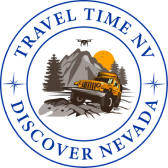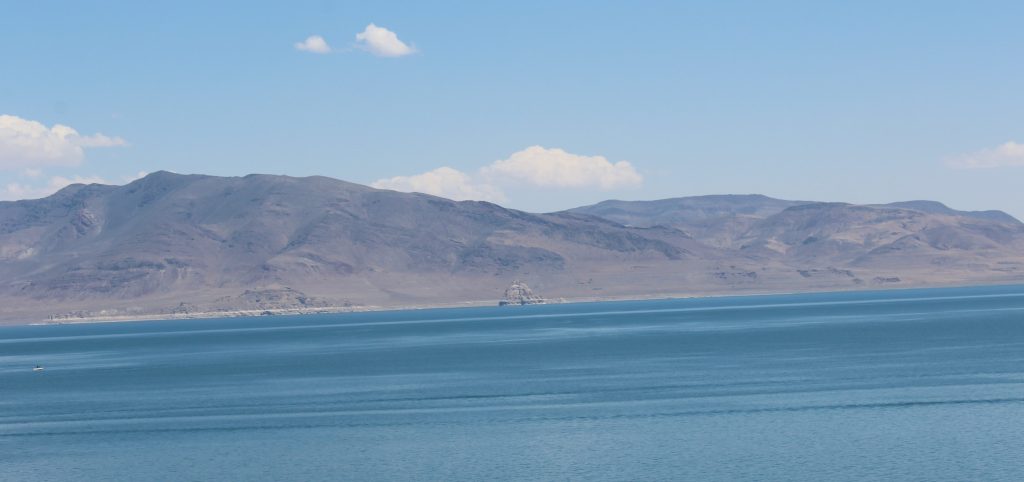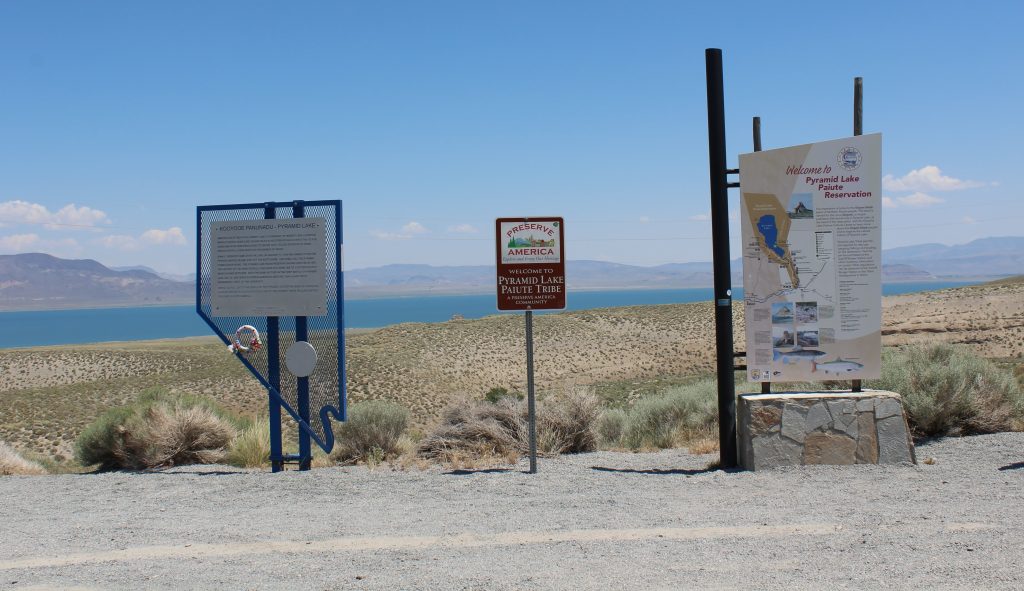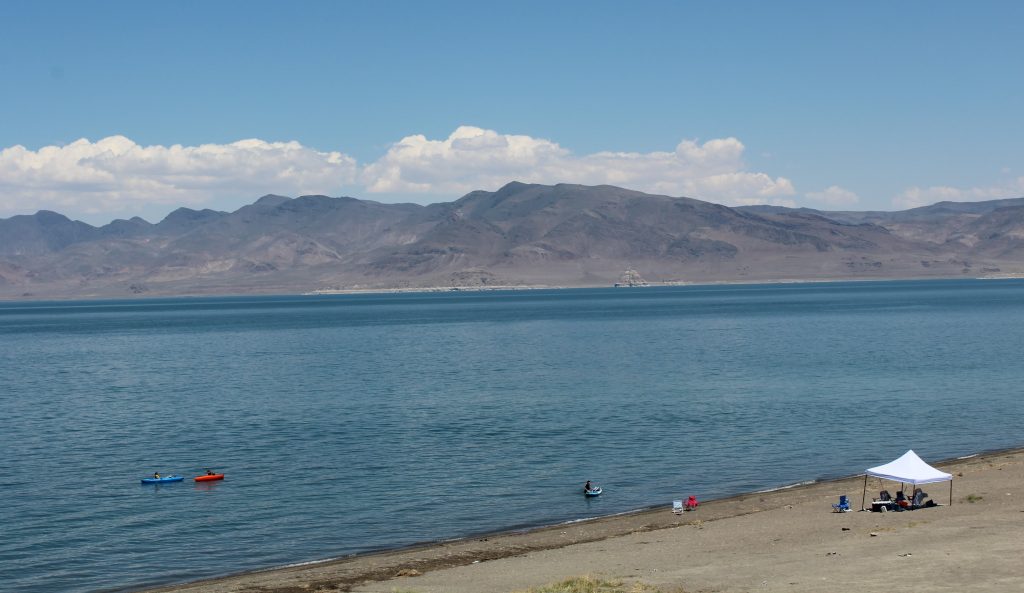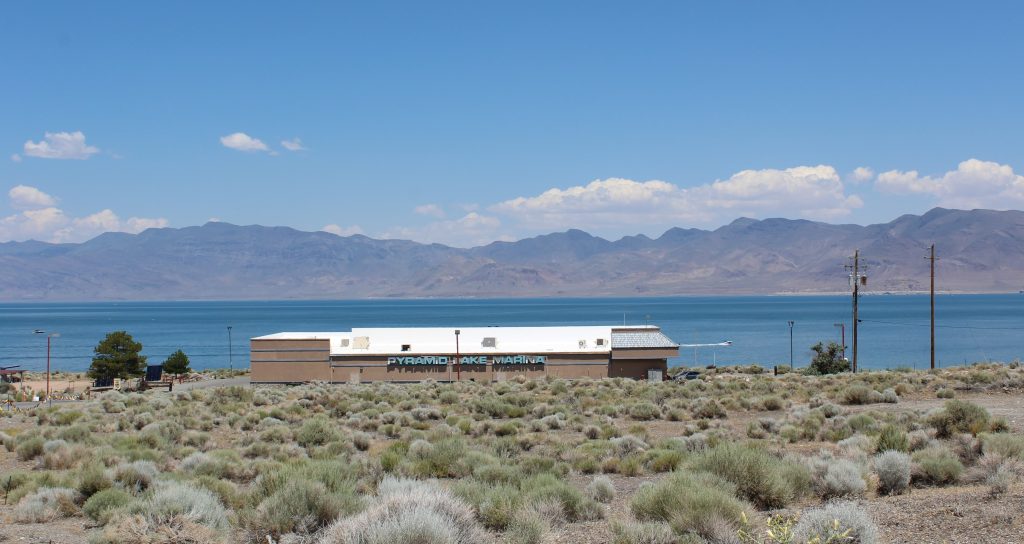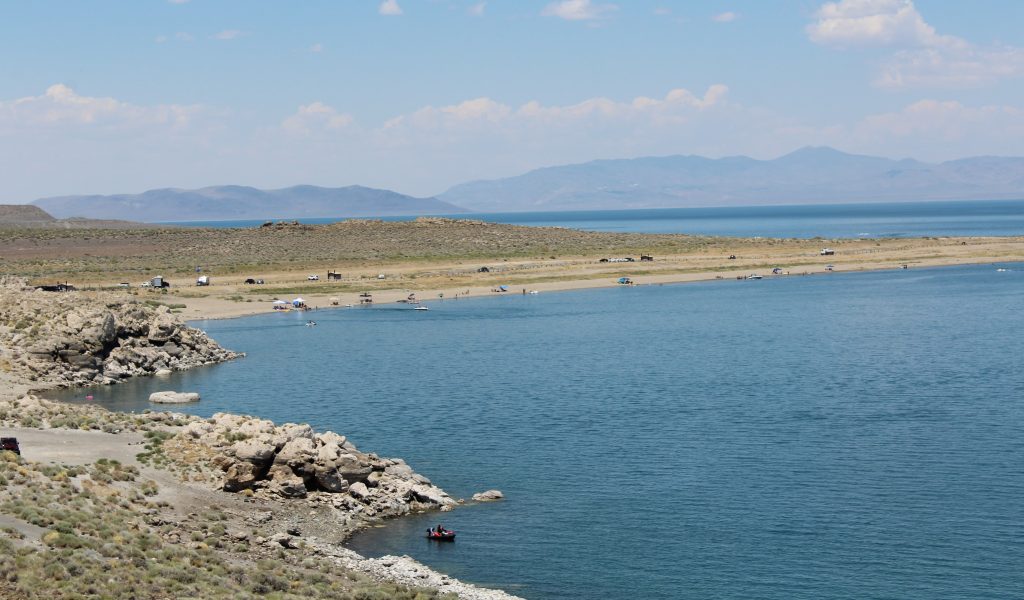Pyramid Lake
Have you ever seen a lake that is not surrounded by a single tree? Pyramid Lake is a place you must see in person to appreciate its uniqueness and vast beauty! Your trip to Pyramid Lake can be a basic half-day or full day depending on how much of the lake you want to experience. Or, if you enjoy RVing and camping, you can spend a week or longer. Located in Nixon, Nevada, Pyramid Lake is about 48 miles northeast of Reno.
Pyramid Lake Tribal permits are required for day use, camping, fishing and boating on the reservation. Some of the outdoor activities include hiking, swimming, kayaking, paddleboarding and mountain biking. Permits may be purchased at the Sutcliff Ranger Station or online at PyramidLake.us/permits.
Fishing permits are available October 1 through June 20 at https://plpt.nagfa.net/online. When boating on the lake, you need to use caution; the wind can come up very quickly and the water can become dangerous with unpredictable weather cycles. For information regarding fishing guides and charters, contact the Pyramid Lake Tribe Tribal Secretary at 755-574-1000 or email: tribalsecretary@plpt.nsn.us.
There is a Marina in Sutcliffe which has an RV park. There are also RV parks in nearby Wadsworth. Past the paved road heading north into the Smoke Creek Desert, there are dirt roads north of Sutcliffe. However, be well prepared with a map, spare tire and follow the dirt road code in this rugged terrain.
On the east side of the lake, there is a wetlands nature trail by the Numana Hatchery. As you continue on your adventure, you may see many water birds at the Anaho Island National Wildlife. The refuge birds include the American white pelican, Caspian Tern, Great Blue Heron, Snowy Egret, California Gull, Double Breasted Cormorant and the Black-Crowned Night-Heron. The 494 square-acre island has almost doubled in size over the past 100 years due to dropping water levels. There is no public access to the island and boats are not allowed within 1,000 feet of the shoreline.
Next, you will see the Stone Mother tufa rock formation which resembles a hooded Indian woman with a basket sitting next to her. And, you’ll get an excellent view of the famous Pyramid rock for which the lake was named. A strongly suggested stop is The Pyramid Paiute and Tribe Museum and visitor’s center located in Nixon. It features the tribe’s history and culture with interesting displays plus the history of Pyramid Lake.
Pyramid Lake is truly a must see location! It is one of the last inland seas from prehistoric time with amazing history and abundant recreation. You have to see it to believe it.
FUN FACTS
Pyramid Lake is a salt water, natural lake is 27 miles long and 4 to 11 miles wide with a maximum depth of 356 feet and encompasses 476,428 acres; its shorelines extending 69 miles. One of its unique features is that it is a “terminal lake” meaning the water flows in from Lake Tahoe via the Truckee River but does not flow out. It is the only place in the world that starts with a lake and ends in a lake. The landscape includes tufa rock formations which are calcium carbonate deposits formed more than 10,000 years ago. The beautiful water color constantly changes from all shades of turquoise to blue to gray.
The Pyramid Lake Reservation is home to the Paiute people who are named for the native fish cui-ui. The two endangered species of fish are the native cui-ui and the Lahontan cutthroat trout. The only place in the world the cui-ui fish are found is in Pyramid Lake. These prehistoric fish are over 2 million years old. The cui-ui fish may only be caught and kept by the native Paiutes. So, if you accidentally catch one, you have to turn it loose! The record holding catch for a Lahontan cutthroat trout is 41 pounds and was caught back in 1924. You may also catch the Tahoe sucker, Lahontan Tui Chub and Sacramento Perch. Marble Bluff Dam is open to the public during spring while the cui-ui are spawning.
From Reno, you take Hwy 80 for 30 miles to the Wadsworth exit. After another 16 miles, you will arrive at Pyramid Lake. There is no admission fee.
The paved roads do not allow you to drive the entire way around the lake. By taking a left on Hwy 447, you will pass viewing points to stop and learn about the history plus take amazing photos on your way to Sutcliff.
Take a right on Hwy 447 to go to the Numana Hatchery, Marble Bluff Dam & Fish Hatchery. You can continue to drive past Ahano Island for a closer view of the Pyramid. Plus, this takes you to the museum and visitor center.
For a scenic route on your return trip, take the Hwy 445 back to Reno.
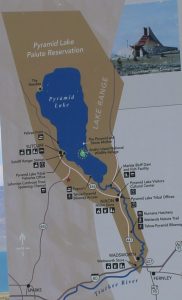
- Be sure to bring plenty of water
- Sun protection (sun block, sunglasses, hat)
- Make sure your batteries are fully charged on all your electronics (iphones and cameras)
- Binoculars, zoom lens and tripods for quality photos
- A picnic lunch and/or snacks
Pyramid Lake (Kooyooe Panunadu) is a remnant of the ancient Lake Lahontan which covered 8,450 square miles in western Nevada during the ice age. Caves and rock shelters along its shores show evidence of the Paiute (Numu) people living there for thousands of years.
Explorer John C. Freemont’s expedition into the Great Basin occurred from 1843 to 1844. When he moved southward from the Columbia River Basin, he discovered Pyramid Lake together with its connection to the Truckee River. On January 10th, 1844, he named the lake after the large rock off the east shore of the lake that looked like an Egyptian pyramid. The Pyramid Lake Indian Reservation was created in 1859. The declaration of the Pyramid Lake Reservation was made on March 23rd, 1874.
In the spring of 1860, the first instance of violence to Washoe country was a clash between the frontier mining society, that was just discovering the Comstock Lode, and the Indian population of the northwestern Great Basin. On the Carson River about 30 miles east of Virginia City, James Williams had established a typical trading station. While he was absent one day, some of his companions kidnapped two young Indian women which provoked an attach from the Indians killing three white men. This was probably done by the work of the Bannock Indians who were temporarily in the area, not by the generally peaceful Paiutes. Exaggerated reports and rumors circulated that hundred of Indians were on the war path. Men formed military companies in Genoa, Carson City and Virginia City; they were ill-prepared with Major William Ormsby of Carson City as an “informal” commander. On May 12, about 100 men proceeded down the lower Truckee Canyon toward Pyramid Lake and did not anticipate the Indians being prepared for them. The Paiutes who were innocent of the assault on William’s trading station were ready to protect their home territory. They ended up killing 76 men, including Major Ormsby and wounding several others.
A period of panic ensued after that battle and calls were sent out to California for reinforcements. Later in May, over 200 soldiers and 500 volunteers marched towards Lake Pyramid again and the Indians dispersed. The casualties vary from the Indians claiming only four of their people died while other research concluded more than 100 were killed.
Interestingly, during the same season as these battles occurred, the famous Pony Express “high speed” communications, private mail-carrying company between California and the Midwest began.
In 1913, President Woodrow Wilson designated Anaho Island as a preserve and breeding ground for native birds. It is managed by the Fish and Wildlife Service and the National Wildlife Refuge System.
Over the decades, Pyramid Lake Pyramid has become a popular tourist destination for its amazing beauty, history and recreation.
